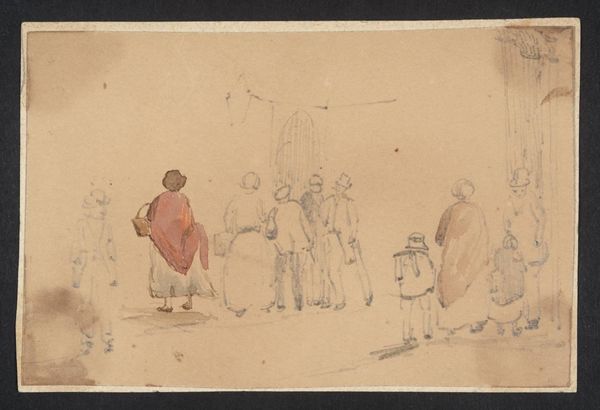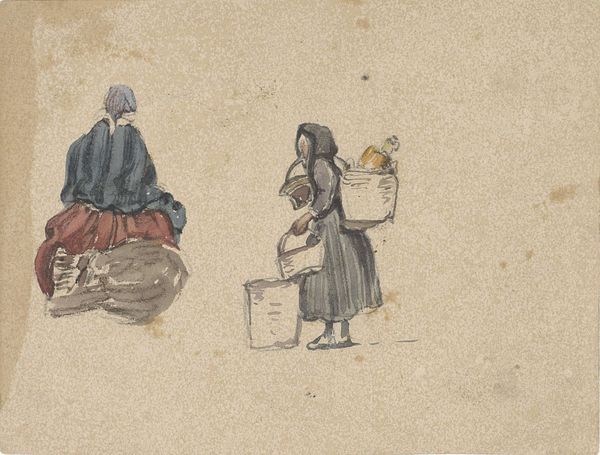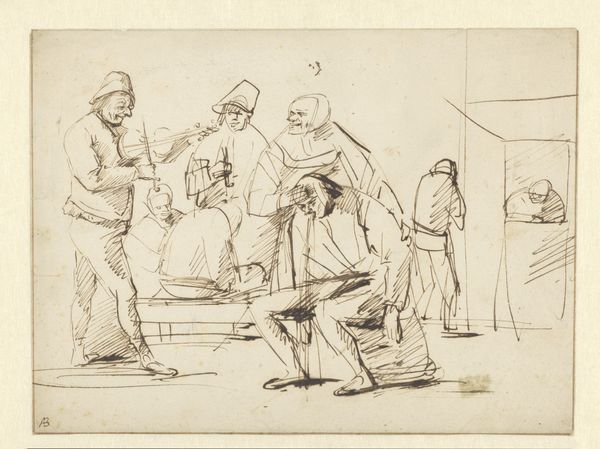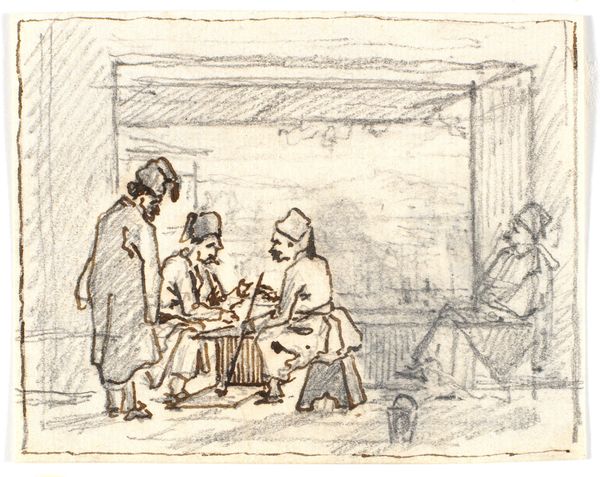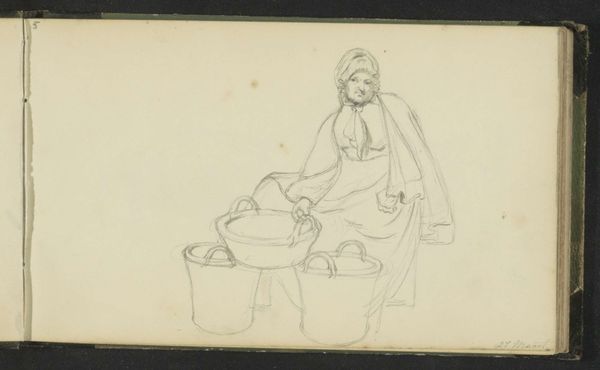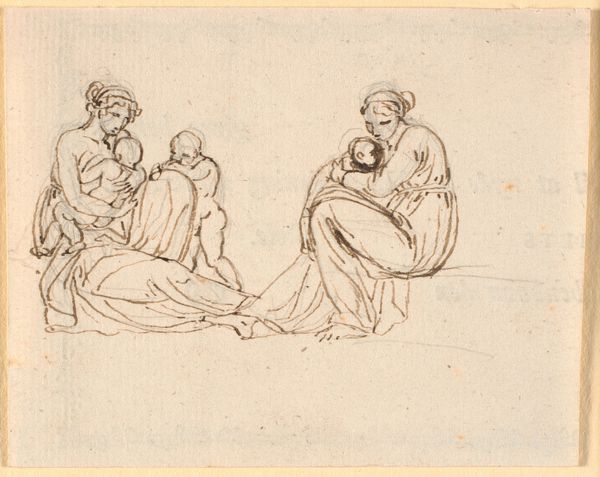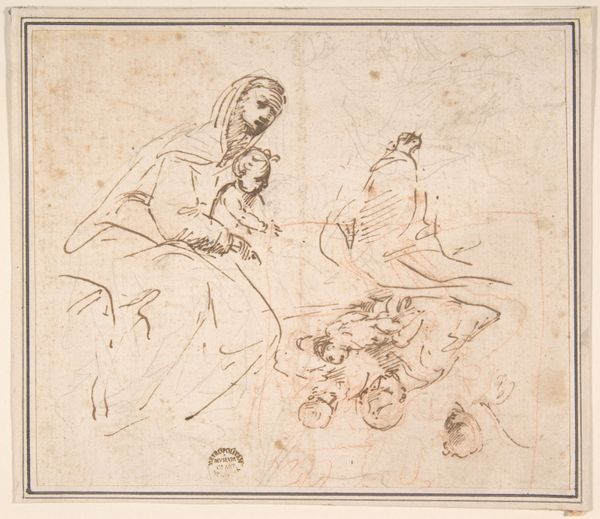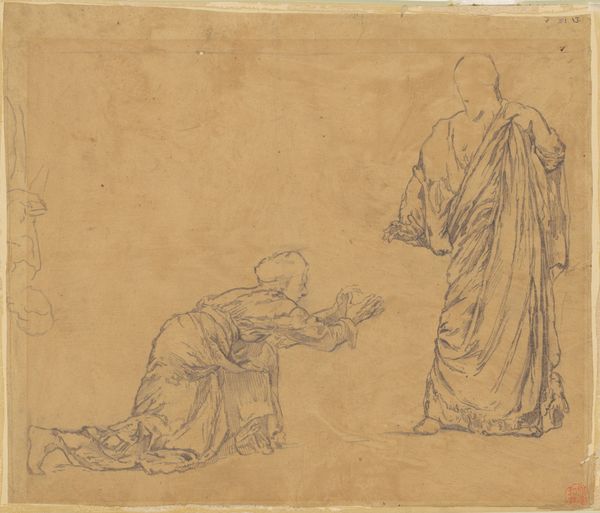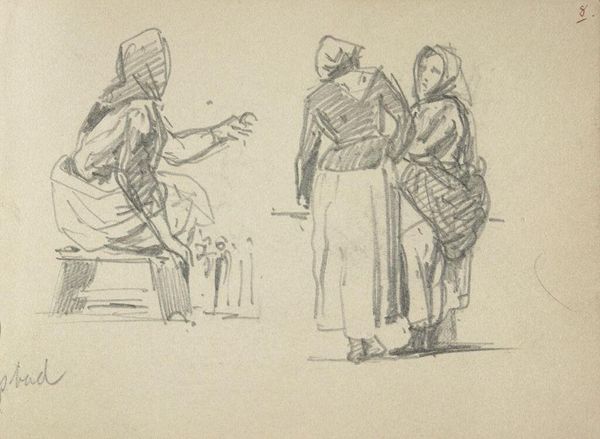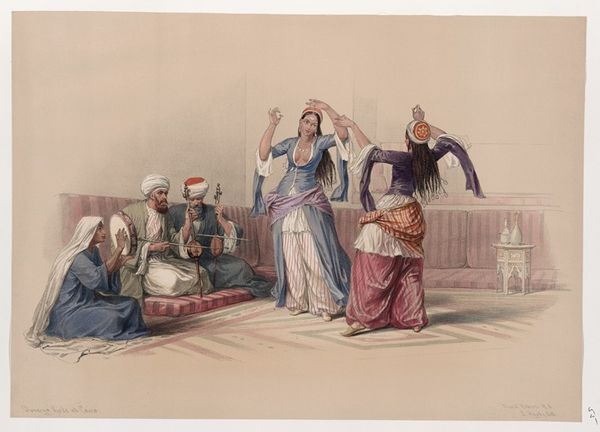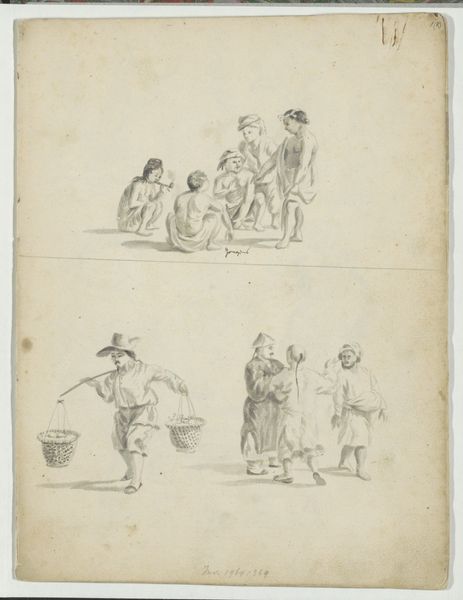
drawing, print, pencil, pen
#
portrait
#
drawing
# print
#
romanticism
#
pencil
#
orientalism
#
pen
#
genre-painting
Dimensions: Sheet: 7 1/8 × 11 1/4 in. (18.1 × 28.5 cm)
Copyright: Public Domain
Editor: This drawing, "A Turkish Notary and Two Women," made between 1835 and 1836 by Martinus Rørbye using pen, pencil and print, feels quite intimate. I'm curious about the role of the Notary... what can we understand through his portrayal alongside these women? Curator: It's fascinating to observe how Rørbye positions the notary, wouldn't you agree? Think about the semiotics of his elevated position behind the table, compared to the women seated beside him, their faces partially veiled. How might this arrangement speak to notions of authority, visibility, and perhaps even a Western fascination with the "Orient" and its power dynamics? The box also becomes a table and divider. What is he offering them? Editor: That's a great point about the power dynamic! So the placement and clothing act as symbols. Is Rørbye intentionally playing into the orientalist perspective, or is he attempting to offer a more nuanced depiction? Curator: Consider the artistic milieu of the time. Romanticism, and its subgenre Orientalism, often relied on visual shorthands – codified ways of representing cultures perceived as "other." However, the detailed rendering, the specific textures of fabric, also suggests an ethnographic interest, a desire to record observations. Does that detailed interest change your perspective on his intention at all? Editor: I can see both sides. The drawing is very detailed and descriptive, yet it's hard to escape the fact that he is an outsider looking in. I’m thinking more about visual rhetoric now and how artists borrow, adopt, or rewrite that vocabulary. Curator: Exactly. It's through that lens – the negotiation between artistic tradition, cultural perception, and individual observation – that we can truly start to unravel the complexities of works like these. Thank you. Editor: I agree, recognizing those tensions has broadened my view on the artwork.
Comments
No comments
Be the first to comment and join the conversation on the ultimate creative platform.
